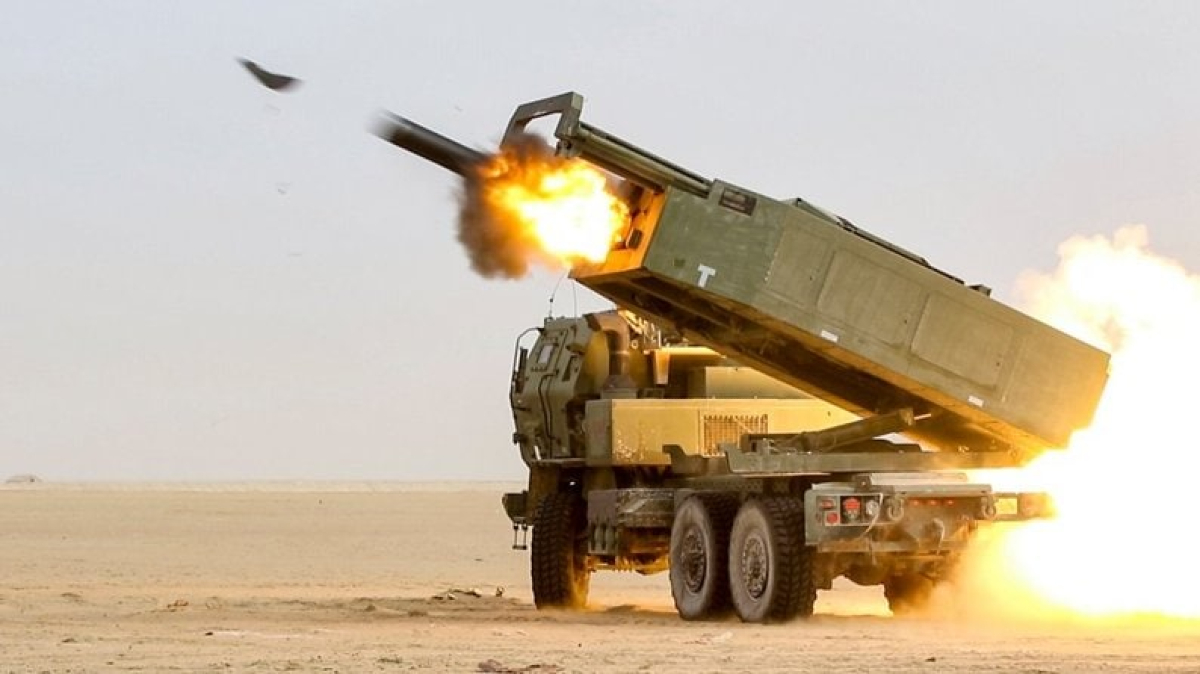As Ukraine continues to ramp up its offensive against Russia using long-range weapons like HIMARS, Russia has started deploying countermeasures like radar reflectors to confuse the enemy.
The Ukrainians have been launching concerted strikes on critical infrastructure and supply lines in Russian-occupied territory to cripple the invading force. It struck the two bridges near Kherson Oblast in late July – the Antonivsky Bridge and a Rail bridge – over the Dnipro (Dnieper) River.
The Antonivka and Darivka bridges, as well as a road beside the dam of the Kakhovka hydroelectric power plant, were recently struck by Ukrainian military forces, local Ukrainian media reported. Russia uses these bridges and routes for moving heavy equipment and weapons.
Russia, on its part, is trying to evade enemy fire by deploying countermeasures. Russians have deployed an array of pyramidal radar reflectors in the water to the west of the Antonivsky bridge and near the rail bridge. The Antonivsky Bridge is just upstream of Kherson.
Earlier, there were speculations that Russia was building a pontoon bridge after Yurii Sobolevskyi, First Deputy Chairman of Kherson Regional Council, published some photographic evidence. These speculations, however, have now been put to rest with the latest satellite images.
After being armed with long-range weapons like HIMARS, Ukraine has upped the ante against Russia with its counter-offensive. Russia also accused Ukraine of conducting a drone strike against its Black Sea fleet Headquarters.
DECOY DEFENSE: #Russia rolls out BARGES which are COVERED in radar reflectors at the #CRIMEAN Bridge to COUNTER potential THREATS from #Ukrainian forces who have suggested the crossing is their number one TARGET.@IntelRepublic#RussianUkrainianWar #UkraineWar pic.twitter.com/HNCAmCU4nr
— George A. Hamalian (@gahamalian) July 11, 2022
It is potentially the reason why the Russians have resorted to radar reflectors. Kherson was the first city that fell to the Russians in the early days of the invasion.
It is not the first time Russia is resorting to these countermeasures to defend against Ukrainian attacks. In early July, it deployed decoy barges covered in radar reflectors and smokescreen capabilities to protect the critical Kerch bridge connecting Russia with Crimea.
Currently, the only way for Moscow to hold onto this oblast is by maintaining its supply lines over the Dnipro river.
Russia Wants Ukraine
Besides the satellite imagery, footage of ferry operations next to the defunct Antonivskiy Bridge has also surfaced. In the video, as could be seen below, Pyramidal radar reflectors spaced out alongside the span could be seen between the two partially destroyed bridges.
It becomes evident that Russia installed these radar corner reflectors at both locations, creating a “phantom” or “ghost” bridge that can be seen next to the actual bridges on the satellite-based radar. This should also give its forces time to repair the real bridges, risk-free from attacks.
These bridges are the main strategic targets for Ukrainian forces now that they have M31 Guided Multiple Launch Rocket Systems (GMLRS) fired by HIMARS and M270 launchers in their long-range guided arsenal. The HIMARS do not have the range to strike the Kerch bridge that Russia has meticulously defended, but they can easily reach Kherson.
EurAsian Times reached out to Defense expert Girish Linganna to understand how Russia plans to defend itself using these radar reflectors. He said, “In Ukraine, reports suggest troops are using Guided MLRS that adds on the use of GPS coordinates of the target and the inertial navigation system. This has devastated the Russians in Kherson, who have tried to move their supplies closer to civilian centers. This precision targeting in urban setup is where HIMARS shines.
“They have deployed pyramidal radar deflectors. Although the Ukrainian soldiers can spot their targets with the naked eye, the missile system using radars and satellite imagery (also using specialized radars) cannot, by its design, locate a target. The system sees the entire stretch as one flat surface. Russians exploit a technical flaw in how HIMARS works to protect their supply line.“

The purpose of these radar reflectors or the crude metallic objects, sometimes known as corner reflectors, is, thus, to deceive approaching radar-guided missiles meant to strike the bridge. It may be done by offering a more enticing target or making it harder to target the area itself.
However, the HIMARS are not radar-guided systems. Ukraine’s only long-range radar-guided weapon is the Harpoons, which are not designed for attacking targets from the ground.
Linganna explains, “GMLRS uses GPS coordinates of the target and its inertial navigation system. The GPS coordinates are provided using intel from other sources such as satellites. The radar is used by satellites to pick the GPS coordinates. In HIMARS, as used in Ukraine, the missile does not have radar, but systems that feed GPS to GMLRS use radar to find the target coordinates.”
While several others are questioning the effectiveness of such a simple system against sophisticated weapons like the HIMARS, the Russian move seems to be based on a thought-out idea. As for now, Russia has established that radar reflectors are its weapon of choice when it comes to protecting bridges.
- contact the author at sakshi.tiwari9555@gmail.com
- Follow EurAsian Times on Google News





